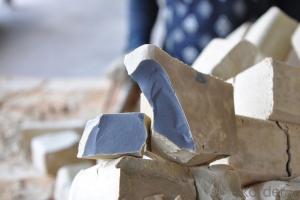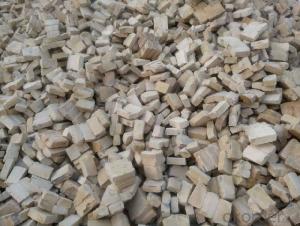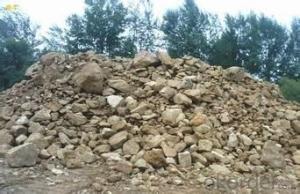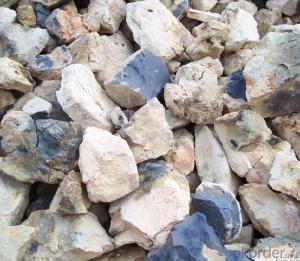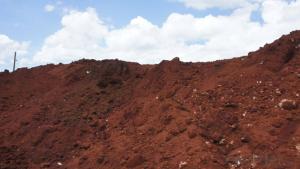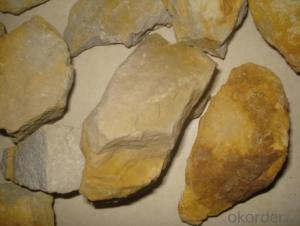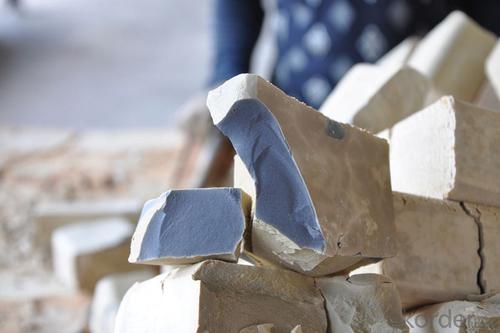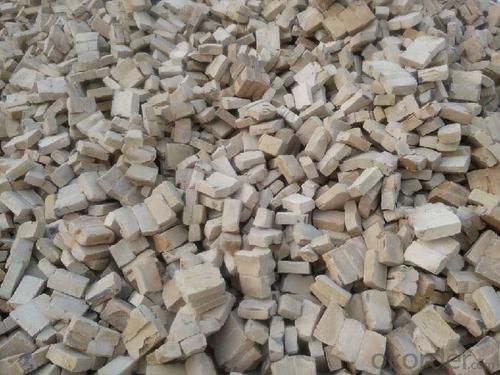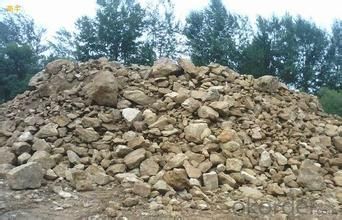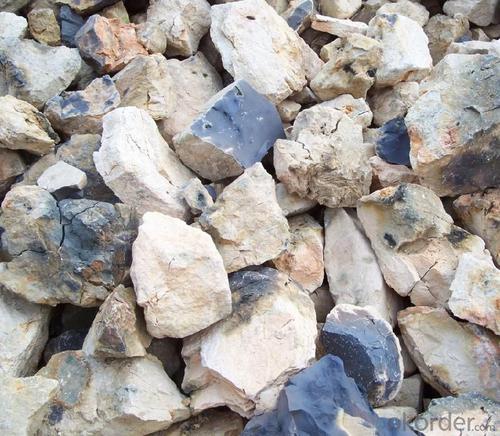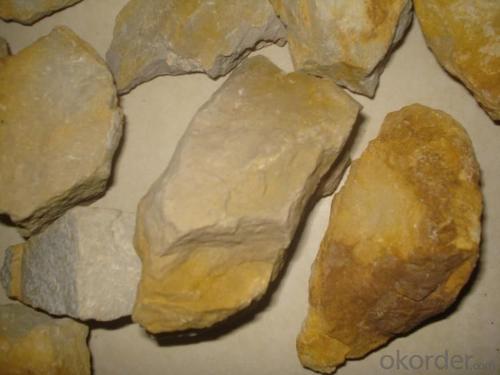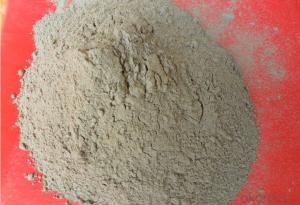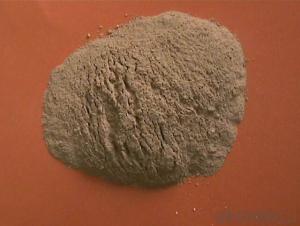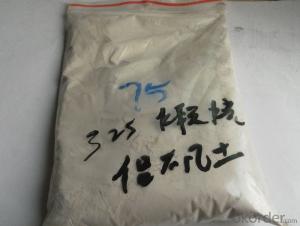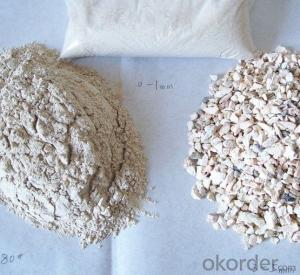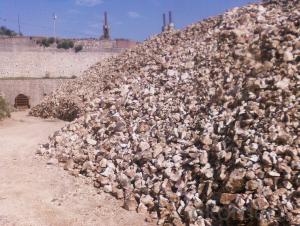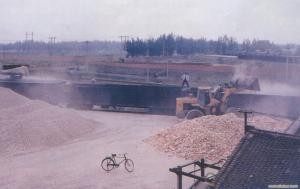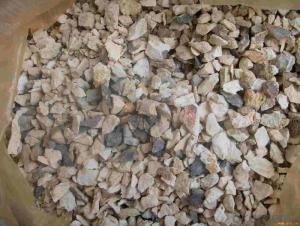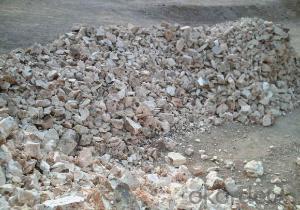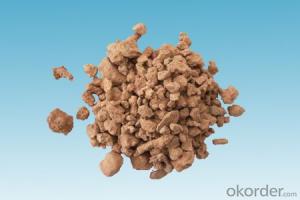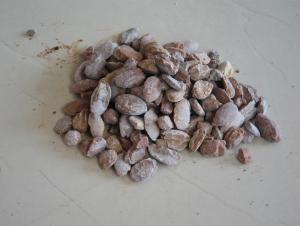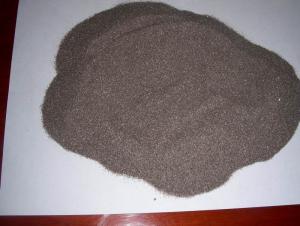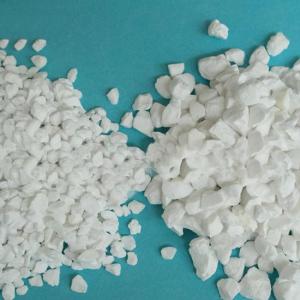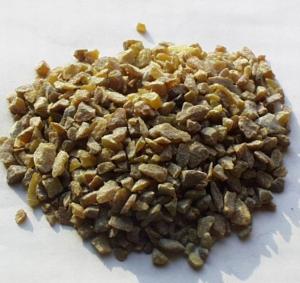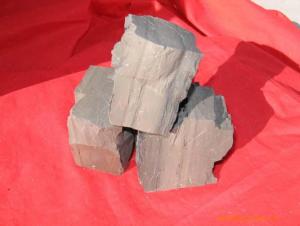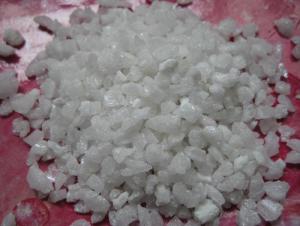Raw Materials for Refractory:China Calcined Bauxite for Cement Industry - Lowest Market Price CNBM
- Loading Port:
- Tianjin
- Payment Terms:
- TT OR LC
- Min Order Qty:
- 11 m.t
- Supply Capability:
- 11111111 m.t/month
OKorder Service Pledge
OKorder Financial Service
You Might Also Like
1.Structure of Calcined Bauxite Description
Bauxite (aluminous soil; Bauxite) is also called the alumina or bauxite, main ingredients are alumina, hydrated alumina containing impurities, is an earthy mineral. White or gray, brown and yellow or light red by iron. From 4 to 3.9 g/cm3 density, hardness, 1 ~ 3 is not transparent, very brittle. Very difficult to melt. Insoluble in water, soluble in sulfuric acid, sodium hydroxide solution. Mainly used for aluminium, refractory material.
2.Main Features of the Calcined Bauxite
Calcined bauxite is one of the principal ore of aluminum. Calcined bauxite contains hydrous aluminum oxides and aluminum
hydroxides, formed through the laterization of aluminous rocks in tropical and subtropical areas .Calcined bauxite is obtained by calcining (heating)superior grade bauxite at high temperature (from 85OC to 1600C) .This removes moisture there.By increasing the alumina content,compared to an alumina content of about 57%to 58% in raw bauxite, calcined bauxite has an alumina content of 84%to88%.The heating is carried out in rotary kilns.
3.Main usage of the Calcined Bauxite
(1) aluminium industry. Used in national defense, aerospace, automotive, electronics, chemical industry, daily necessities, etc.
(2) precision casting. Alumina clinker made after the mould precision casting processed into fine powder. Used in military industry, aerospace, communications, instrumentation, machinery and medical equipment department.
(3) is used for refractory products. High bauxite clinker refractoriness is as high as 1780, chemical stability strong, and good physical properties.
(4) aluminum silicate refractory fiber. With light weight, high temperature resistance, good thermal stability, low thermal conductivity, heat capacity is small and the advantages of resistance to mechanical shock. Used in iron and steel, nonferrous metallurgy, electronics, petroleum, chemical, aerospace, atomic energy, defense and other industries.
(5) in magnesia and bauxite clinker as raw materials, add the appropriate binder, used for pouring ladle whole ladle lining has particularly good effects.
(6) manufacture alumina cement, abrasive materials, ceramic industry and chemical industry can be aluminum of various compound.
4. Calcined Bauxite Images
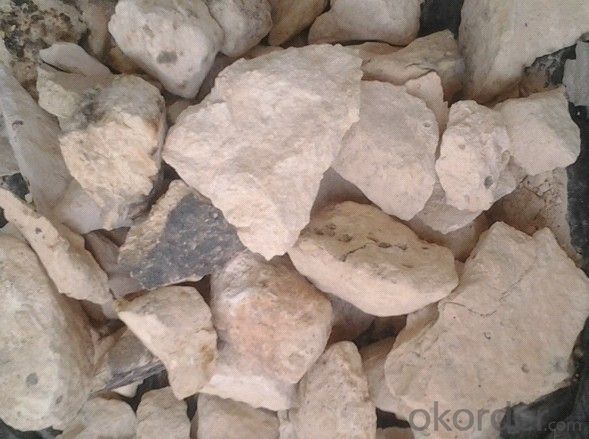
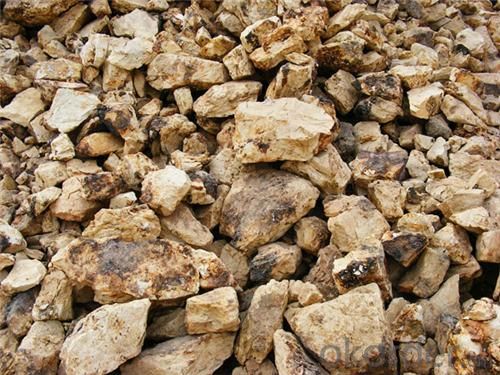
5. Calcined Bauxite Specification
Product Code | Al2O3 % | Fe2O3 % | Bulk/Density g /cm3 | Water absorption % | Moisture % |
SP-A | ≥88 | ≤1.8 | ≥3.15 | ≤4 | ≤0.2 |
SP-B | ≥85 | ≤2.0 | ≥3.10 | ≤4 | |
SP-C | ≥80 | ≤2.5 | ≥2.90 | ≤5 | |
SP-D | 70-80 | ≤2.5 | ≥2.75 | ≤5 | |
SP-E | ≥60 | ≤3.0 | ≥2.65 | ≤6 | |
The discretionary reduction of all fine powder should be no more than 0.5% | |||||
6.FAQ of Calcined Bauxite
1). Q: Are you a factory or trading company?
A: We are a factory.
2). Q: Where is your factory located? How can I visit there?
A: Our factory is located in ShanXi, HeNan, China. You are warmly welcomed to visit us!
3). Q: How can I get some samples?
A: Please connect me for samples
4). Q: Can the price be cheaper?
A: Of course, you will be offered a good discount for big amount.
- Q: what's the standard of fireproofing material?
- Class A1 is divided according to the combustion performance of GB8624-2006 building materials and products. Specific technical index requirements are: 1, the temperature rise ≤30 degrees;mass loss rate ≤50%; combustion duration time is 0; 2, main components, overall products, gross calorific value of external secondary components ≤2.0MJ/kg; any inner secondary component ≤1.4MJ/kg; (there are difference between homogeneous and non-homogeneous). Z802 building materials noninflammability testing furnace has to be used for testing technical indicators mentioned in test 1, using Z805 building materials combustion heat value to test technical indicators mentioned in test device 2.
- Q: How much modulus is used as refractories material of sodium silicate.
- Storage and use are very convenient, especially for mechanized and the evenly refractory material and the sodium silicatemodulus is generally...2. transportation. The appearance of product is pure white. Instant powdered sodium silicate, also known as instant sodium metasilicate.4 to 3, in powder form, automation. in the range of 3, hydrated sodium silicate
- Q: For refractory knowledge. What is the ratio of clay ramming?mass?
- Soil aggregates, dispersing agent, water reducing agent, plasticizer, binding agent and powder! ~ Bone meal feed approximately 6, OK
- Q: The difference between refractory and thermal insulation material
- Refractory refers to inorganic non-metallic material, whose refractoriness is not less than 1,580℃, but refractory is not necessarily insulated material. Inorganic thermal insulated material also belongs to refractory as long as its refractoriness is higher than 1,580℃.
- Q: Which kind of furnace hearth refractory is better?
- hearth selected material] hearth material must be durable, high temperature resistant, general selecting masnory made of refractory cement, silicon carbide refractory products, mullite or multicrystal mullite (which is the general term of minerals composed of a series of aluminum silicate, mullite is only stable binary compound in the Al2O3-SiO2 system) etc.. [hearth] is a three-dimensional space surrounded by furnace walls for combustion of the fuel. The funtion of hearth is to ensure the fuel to burn as far as possible, and to cool the gas temperature of the hearth exit to the allowed temperature of convection heating surface safe operation . Therefore, the hearth should have sufficient space and adequate heating surface. In addition, there should be reasonable shape and size in order to fit the burner and the organize aerodynamic field inside the furnace to prevent the flame from adherence, dashing walls and have high fullness and eve wall thermal load.
- Q: Which region use more refractory?
- Gongyi of Henan province use more refractories
- Q: what's the requirements of refractory for forge furnace?
- operating temperature of forge furnace is 1000 ° C, reasonably choosing refractory for build furnace has an important meaning for guaranteeing the normal operation of the heating furnace, improving the service life of furnace and energy saving. general requirements for the properities of refractory: 1, it should be equipped with the properity of no deformation and melting under certain temperature. 2, it should be equipped with the neccessary structural strength without softening deformation in high temperature. 3, volume stability at high temperature, brick body won't be deformation or cracked due to expansion and contraction; 4, not broken and peel off under rapid changes of temperature or uneven heating; 5, resistant to chemical erosion of molten metal, slag and furnace gas,etc.
- Q: What are the specifications of fireclay bricks?
- 1. The various classification criteria of clay bricks. First, according to the physical and chemical indicators, they can be divided into these types: (NZ) -42, (NZ) -40, (NZ) -38. Second, the classification of specifications of clay bricks is in line with the stipulations in "general shape and size of refractory bricks". Finally, according to the stipulations of relevant state departments, the clay bricks can be divided into standard bricks, ordinary bricks, special-shaped bricks, special bricks. Second, level of refractory temperature of refractory bricks The refractoriness of refractory bricks is divided into four levels according to changes of alumina content. We know that the components in clay bricks include Al2O3. Alkali metals are also included. The refractoriness of AAA-level clay bricks in Ruitai Refractory Material Factory is 1750 ℃; A-level bricks is 1730 ℃; B-level bricks is 1670 ℃; and C-level bricks is 1580 ℃. The softening temperature under a fixed load of Clay bricks is about 1350 ℃. Clay bricks, also known as sintered bricks, are small size artificial bricks for modern architecture. Clay bricks have good properties and high thermal stability, in which Fe2O3 content is less than 2.0 to 2.5%. Overall dimensions: 230 * 115 * 65mm
- Q: What is fire retardant coating mainly used for?
- Fire retardant coating is a coating which is applied to the surface of buildings and structures and can form a protective layer of fire retardancy and thermal insulation. It can reduce the flammability of the coated materials and block the rapid spread of fire so as to improve fire endurance of the coated materials. Features of fire retardant coating: (1) Fire retardant coating itself has a flame-retardancy or non-inflammability, and it can prevent the protected substrate from direct contact with the air, and delay ignition and reduce the burning speed of the objects. (2) In addition to flame retardancy or non-inflammability, the fire retardant coating itself has a a low thermal conductivity, which can delay the transfer of flame temperature to the substrate to be protected. (3) When heating, fire retardant coating decomposes non-combustible inert gas to dilute the combustible gas decomposed by the protected, making it difficult to burn or slow down the burning rate. (4) Fire retardant coating containing nitrogen will decomposite NO, NH3 and other basic groups, which compound with the organic radicals and interrupt the chain reaction so as to reduce the temperature. (5) intumescent fire retardant coating will expand and foam when heating, and form a carbon foam insulation to block the protected objects, thus delaying the transmission of heat to the substrate.
- Q: What are the refractories for converter?
- Analysis of refractories are as follows: MgO-C brick converter Dongxin refractory furnace cap, steel tapping hole, shaft, shaft, pool, air brick
Send your message to us
Raw Materials for Refractory:China Calcined Bauxite for Cement Industry - Lowest Market Price CNBM
- Loading Port:
- Tianjin
- Payment Terms:
- TT OR LC
- Min Order Qty:
- 11 m.t
- Supply Capability:
- 11111111 m.t/month
OKorder Service Pledge
OKorder Financial Service
Similar products
Hot products
Hot Searches
Related keywords
